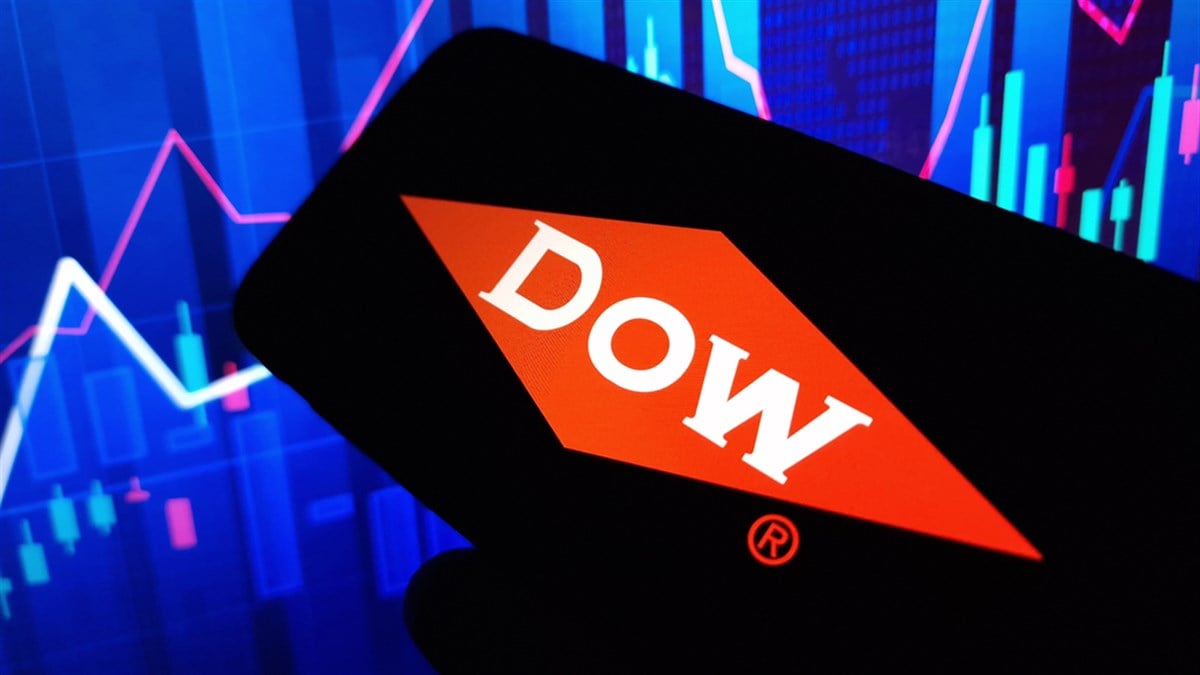
Dow Inc. DOW, a global leader in the materials science sector, recently took a significant step toward reshaping its long-term energy profile. On Mar. 31, 2025, it formally submitted a construction permit application to the U.S. Nuclear Regulatory Commission (NRC) for an advanced nuclear reactor project. This move, undertaken with partner X-Energy Reactor Company, LLC, underscores its strategic commitment to next-generation small modular reactor (SMR) technology.
Yet, this forward-looking initiative unfolds against a backdrop of severe market pressure for the company’s shareholders. Dow’s stock has recently traded near its 52-week low, caught in a downdraft that has erased roughly 27% of its value year-to-date and nearly half its value over the preceding six months as of early April.
This stark contrast presents a critical question for investors: Does Dow's long-term bet on nuclear energy signal a discounted opportunity or reflect justified caution in the current market adversity?
Powering the Future: Dow's Nuclear Blueprint
Dow, through its subsidiary Long Mott Energy, is partnering with X-energy to potentially deploy the Xe-100 advanced small modular reactor at its Seadrift Operations site in Texas.
The project aims to provide low-emission electricity and steam, replace aging energy assets, and support Dow’s carbon neutrality goals. If successful, it could eliminate most Scope 1 and 2 emissions at the site and enhance Dow’s long-term competitiveness.
The U.S. Department of Energy selected X-energy to accelerate advanced reactor development, and a construction permit application has been submitted to the NRC. The review could take up to 30 months, with construction possibly starting later this decade and operations beginning in the early 2030s.
While Dow expects energy costs to be competitive with other clean alternatives, risks include regulatory delays, capital cost overruns, and ensuring the technology performs reliably at scale.
Dow's Stock Plunge Reflects Near-Term Concerns
([content-module:Forecast, NYSE:DOW)Market concerns have caused Dow's stock price to fall significantly, nearing the bottom of its 52-week range. Dow’s management has noted that a slower-than-expected macroeconomic recovery in early 2025 has impacted demand for its products in key areas like packaging, infrastructure, and consumer applications.
This is evident in the company's recent financial performance, with a year-over-year decline in revenue and operating EBIT for the full year of 2024. The fourth quarter of 2024 was particularly challenging, resulting in a GAAP net loss and zero operating earnings per share (EPS).
Dow’s analyst community generally agrees with the market's cautious sentiment, with a consensus rating of Hold and a trend of downward revisions to price targets among major firms. While the average analyst price target of around $46 suggests potential upside from the current trading price near $29, the consistent downward adjustments indicate growing skepticism about the near-term outlook.
Financial commentary is divided, with some suggesting potential undervaluation and others advising caution until the chemical industry cycle shows a clearer turnaround.
Managing the Present While Funding the Future
Dow has responded to market and operational pressures with substantial financial countermeasures. These include a targeted program to achieve $1 billion in annual cost savings, primarily through workforce reduction and cuts to external spending. This program is expected to incur charges of $250 million to $325 million in the first quarter of 2025, mainly for severance and implementation costs.
Furthermore, Dow has actively managed its balance sheet by repurchasing $1 billion of higher-coupon debt and issuing $1 billion in new long-term notes. The company also plans to sell a minority stake in certain U.S. Gulf Coast infrastructure assets, with expected proceeds of up to $3 billion, and to reduce 2025 capital expenditures by $300 million to $500 million.
Despite these cost-cutting measures, Dow has maintained its shareholder dividend and remains committed to strategic priorities like the SMR project.
Dow's Balancing Act: Near-Term Hurdles, Long-Term Ambitions
Dow Inc. offers a complex proposition for investors. While it faces significant near-term pressures—highlighted by weak financial results, aggressive cost-cutting, and a stock price near multi-year lows—it is also making a bold, long-term investment in advanced nuclear energy through its SMR project. This initiative aligns with global decarbonization trends and aims to secure future operational advantages.
The key challenge for investors is balancing Dow’s immediate financial risks against the potential rewards of its strategic shift toward a lower-carbon, more competitive future.
Where Should You Invest $1,000 Right Now?
Before you make your next trade, you'll want to hear this.
MarketBeat keeps track of Wall Street's top-rated and best performing research analysts and the stocks they recommend to their clients on a daily basis.
Our team has identified the five stocks that top analysts are quietly whispering to their clients to buy now before the broader market catches on... and none of the big name stocks were on the list.
They believe these five stocks are the five best companies for investors to buy now...
The article "Dow's Nuclear Gamble: A Bold Step in Turbulent Times" first appeared on MarketBeat.
Edge Rankings
Price Trend
© 2025 Benzinga.com. Benzinga does not provide investment advice. All rights reserved.